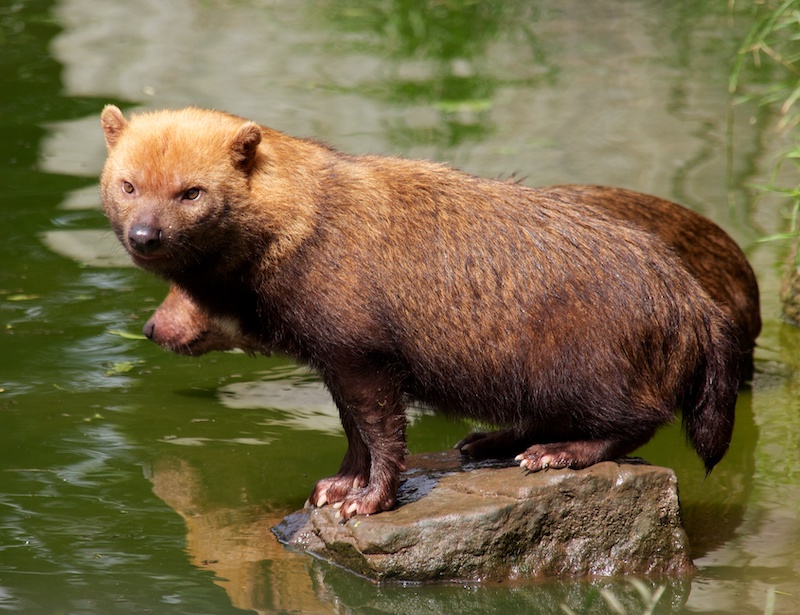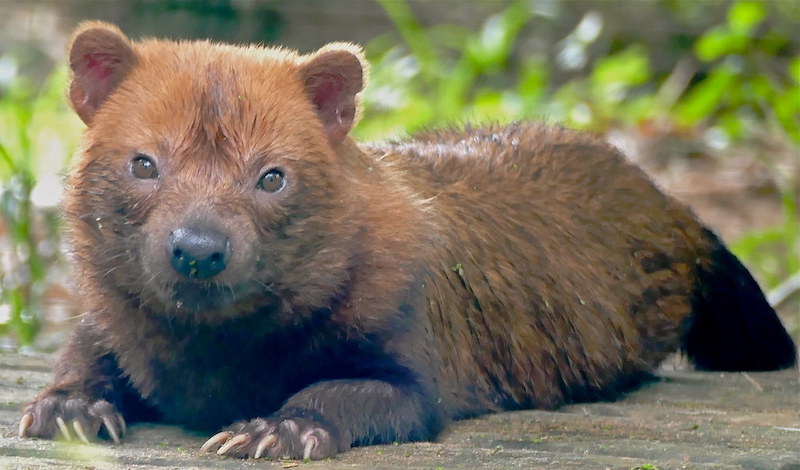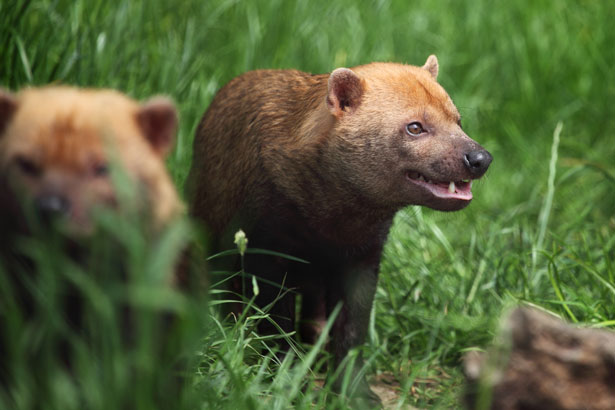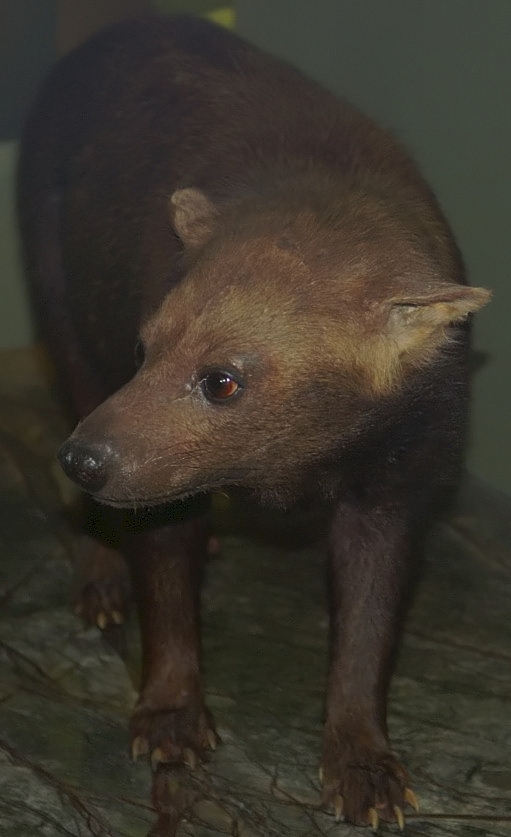The Bush Dog. (Speothos venaticus)

The return of the Costarican wild dog.
Interesting Facts
In Brazil and several Spanish-speaking countries, the bush dog is known by many interesting names that translate to vinegar dog, vinegar fox, water dog, and forest dog.
The bush dog plays a vital role in controlling the local rodent populations.
The Bush Dog, also known as the Savannah Dog, is a species of rare canid and a close relative to the African wild dog. It is a distinctive member of the ‘dog’ family. However, they are different from the other fellow species in that they are smaller than most other members belonging to the family. Also, they are often found in the rainforests, unlike most canids that usually live in open prairies, savannas, and even in the Arctic region.

Scientific Classification
Kingdom: Animalia
Phylum: Chordata
Class: Mammalia
Order: Carnivora
Family: Canidae
Genus: Speothos
Species: S. venaticus
Scientific Name: Speothos venaticus
Description
Length: Both sexes have a typical size between 57 and 75 cm (22 and 30 in).
Weight: An average built body weighs around 5 to 8 kg (11–18 lb).
Height: They stand approximately 20 to 30 cm (8 to 12 in) at the shoulders.
Body: The body is slightly elongated with short legs and a tail, while the structure is about the size of a pet terrier.
Feet: Unlike most other canids, they have webbed feet, with the paws ending in sharp claws.
Head/Face: A broad forehead with a relatively longer muzzle ending in a black snout (nose tip). The eyes are small, dark, and rounded.
Tail: Short but thick, covered with long, smooth hair and having a length of 13 to 15 cm
Fur/hair/coat: The entire body is covered with long light to dark brown to tan hair, with the feet and tail hair darker than the rest.
Teeth: Sharp and continuous dentition, with the canine teeth slightly longer than the rest.
Sexual Dimorphism: The males and females look alike, except that the males tend to be a bit heftier.

Lifespan
Bush dogs can live for up to ten years in captivity. Their longevity in the wild is not known.
Distribution
They are scantily spread from Panama and northern parts of South America, south of southern Brazil, Paraguay, and north-eastern Argentina, as well as west to Bolivia, Ecuador, and Peru.
Habitat
These canines prefer lowlands, semi-deciduous, and seasonally-flooded forests but are also fond of cerrado and wet savannahs. Whichever site they choose, they are always close to water bodies. In Costa Rica, the Talamanca Mountains look like a suitable bush dog habitat, and the canids seem to be doing well. They hope their report will spark the imaginations of other wildlife ecologists, park managers, and rangers, who might set up their camera traps in promising areas.
Behavior
Little is known about their nature in the wild. Bush dogs are terricolous (ground dwelling) canids daily in the heart. They remain active all day along with other members of their packs, including the females. However, some speculate that they are nocturnal.
A pack of bush dogs may consist of up to 10 animals. This means that they are social creatures, and unlike many other canines, both sexes can cohabitate without internal (i.e., within the group) quarrels. They are territorial, and the pack members mark their territory by urinating.
However, a dominance hierarchy is usually established. Bush dogs are highly vocal animals and use high-pitched peeping sounds/calls as vocalization to communicate with and locate the members of their packs in the woods.

Diet
The carnivorous bush dogs prey mainly upon rodents like paca, agouti, and capybara. However, a pack can capture larger mammals like peccary and tapir or birds like rhea.
Reproduction and Life Cycle
Not much is known about their mating system; however, researchers believe they are probably a monogamous species. Only the alpha pair breeds in a group/pack, with the alpha female using hormones to resist the other female members from becoming pregnant. The estrus cycle in a young bitch begins after they are about ten months old and usually lasts for 4.1 days on average.
By this time, the pup is separated from its mother and other females and paired with the males. A single litter can have anything between three and six puppies (rarely one or two) at a time after the female’s gestation period of 67 days. The average period between births is approximately around 238 days.
The mammals create dens in the caves or hollow tree trunks wherein the nursing females live with the offspring while the males move out to hunt for food for the entire family. The juveniles weigh between 130 and 190 g each and are cared for by both the father and the mother for eight weeks to 5 months. Newborns usually wean at around four weeks, reaching the age of sexual maturity after a year.
Adaptations
The feet of these creatures are webbed, which helps them immensely when they take to the water in search of prey or while chasing them.
The bush dog’s body color is the same as the soil color in their habitat, helping them camouflage quickly and easily.
Predators
Bush dogs have no natural predators.
Population Status
The bush dog is the only living species in the genus Speothos, with their population degrading at an alarming rate mainly because of factors like farming and development, leading to habitat destruction and poaching.
